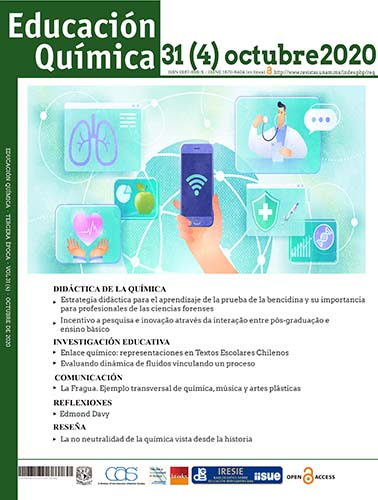Practice for the determination of convective coefficients
Main Article Content
Abstract
This paper shows the determination of heat transfer coefficient in natural convection, using temperature data in interval form around the bulb of a mercury-filled glass thermometer. For this purpose, an experiment was performed, recording the descending data of the meniscus in the capillary thermometer. Two heat transfer models were constructed, and the analytical solutions were generated. In the first model, the temperature of the mercury bulb was considered equal to the temperature of the glass container, while in the second model this restriction was not considered. With the analytical solutions of these models and using a modified least squares method to work with data read in the interval form, the experimental coefficient of heat transfer was determined in the range of measured data. To validate both models, the calculated temperatures were plotted and compared with the experimental data. Results show that the heat transfer coefficient calculated with the unrestricted model is the one that best represents the experimental data.
Article Details
Citas en Dimensions Service

Educación Química por Universidad Nacional Autónoma de México se distribuye bajo una Licencia Creative Commons Atribución-NoComercial-SinDerivar 4.0 Internacional.
Basada en una obra en http://www.revistas.unam.mx/index.php/req.




